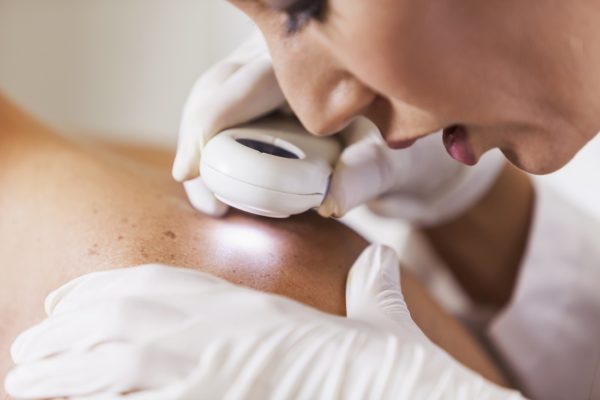Annual Exams
Five Easy Steps to Prepare Yourself

As part of a complete early detection strategy, we recommend that you see a dermatologist once a year, or more often if you are at a higher risk of skin cancer, for a full-body, professional skin exam.
To help you prepare and make the most of your appointment, follow these five simple steps.
- Perform a self-exam and come to your appointment prepared with notes about any new, changing or unusual spots you want to point out to your dermatologist. If you’ve taken smartphone photos of a spot that has changed over time, be sure to show them to your dermatologist.
- Remove nail polish from your fingers and toes to enable thorough examination of fingers, nails and nail beds, since skin cancers can form there.
- Wear your hair loose. Remove pony tails, buns or hair clips so that your doctor can get a good look at your scalp where skin cancers can, and do, develop.
- Pack makeup remover to bring to your appointment and remove any makeup before your exam so that the skin around your eyes is easy to examine.
- Ask questions. This is your opportunity to get valuable advice and insight from a professional trained specifically in diseases of the skin. From explanations of unfamiliar terms to pointers on how to do a skin self-exam, your doctor is an excellent source of information!
During the exam
If you’ve never had atypical moles or skin cancer, the exam will likely be brief (about 10 minutes). You’ll need to remove your clothes and put on a medical exam gown. It is unlikely you will be told to remove your underwear, unless you have indicated that a spot on your genitalia concerns you. Your dermatologist will thoroughly check your skin from head to toe, paying close attention to hard-to-see spots like your scalp, back and buttocks, behind your ears, and even between your toes. Your dermatologist may utilize a small handheld magnifying device called a dermatoscope, that visualizes the outer surface of the skin (the epidermis) and the layers just beneath it.
Your doctor may biopsy one or more suspicious spots. This usually means removing part or all of the lesion and sending it to a lab for analysis. If the report comes back that the spot is skin cancer, your physician will contact you and explain the type of skin cancer and treatment options.
Remember that early detection of skin cancer is the key to the most minimal and cost-effective treatment with the highest chance of a cure. Make your appointment soon!
Learn more about our Destination Healthy Skin screening and education program.



